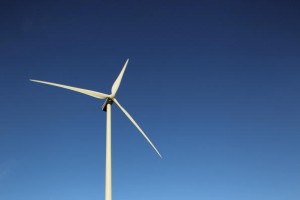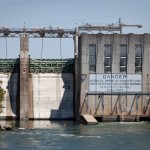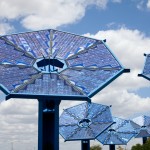The ‘Secret’ to Unlocking Renewable Energy in Texas? Battery Storage

Photo by Sean Gallup/Getty Images
Texas is awash in green energy potential. Problem is, we don't have anywhere to store the renewable energy we produce.
Texas may be rich in fossil fuels like oil and gas, but it’s also awash in clean, renewable energy.
Well, at least it could be. With the most renewable energy potential in the United States, Texas is a formidable candidate to up their renewable energy usage. Wind power now supplies 8 percent of energy to the grid in Texas and it’s cheaper than ever. However, the Energy Institute’s Raymond Orbach at the University of Texas at Austin says there’s still one major roadblock. “If someone could lick the storage problem,” Orbach says, “we would really have a remarkable resource.”
The ‘storage problem’ boils down to how energy works. “You can’t turn the sun off, and you can’t tell the wind to blow,” says Orbach. It’s simply unreliable. And you have to use the energy while it’s there. Right now turbine energy created from early afternoon winds has to be used immediately, in the early afternoon. But the demand for energy peaks later in the afternoon during the hot Texas summers, when the winds have died down. Solar could fill that gap, but efforts to incentivize it’s construction haven’t gone anywhere yet in Texas, and there’s always the question of what happens when a bunch of clouds pass over.
So creating something that can store and save renewable energy like wind and solar for later would change the game entirely.

Photo courtesy of the Energy Institute
Raymond Orbach of UT's Energy Institute says if his group's research is successful, Texas could become a worldwide hub for green technology.
That’s why scientists around the world are scrambling to find a workable method for storage. Orbach says there’s already a solution, but it’s fairly inefficient. It’s called air compression, where air is tightly stored and gradually released when the energy is needed. Another storage strategy uses wind energy to pump water up a hill. The water is released down the hill when needed, which flows and powers turbines that produce energy. However, Orbach says this method is also inefficient. Plus, he says, “You need water and you need a hill. And in Texas that’s not always available where and when you want it.”
So the Energy Institute has focused on battery technology, similar to how you rely on a rechargeable battery to keep your smartphone running. Orbach says the Institute is performing research with cost-efficient lithium ion technology using flow batteries with liquid cathodes. He thinks his team is fairly close to finding this key material, though he admits you never know with research.
“Who knows who’s going to be the one who puts in the thumb and pulls out the plum,” says Dr. John Goodenough, a lead researcher at the Institute. He’s played a significant role in the development of lithium ion batteries and now he’s leading the renewable storage research team at UT. One of the main puzzles Goodenough is trying to solve is finding a material that can be used as a solid electrolyte in the battery and pass lithium ions, but not water or electrons.
“So the move is, how do I get a thin, chemically stable, and mechanically robust solid electrolyte that can act as a separator in a battery configuration?” says Goodenough. Apparently, there’s no telling when Goodenough will find that material, or if he’ll find that material. But if he does – the batteries could quickly be put into use.
“Within a couple of years, we could make wind energy available when we really need it,” says Orbach. He also says if this discovery is made, it could revolutionize Texas energy. With its windy coastline and plains, the Texas renewable energy potential could easily meet the state’s growing energy demands and possibly build a renewable manufacturing center for the batteries in Texas. “Texas would be sitting pretty,” Orbach says with a grin.
In March, the Public Utility Commission of Texas approved new rules that will make it easier to finance and deploy large-scale storage projects in the state. And Orbach is planning to press Texas legislators to raise additional funding for the research, potentially to the tune of a billion dollars. (Millions in funding from the Department of Energy that was going to support the project been put on hold amid federal budget deficit reductions.)
Orbach says the batteries could be used to store not just wind energy, but solar and nuclear energy too. He is hopeful for a win-wind situation: a Texas discovery that will play a major role in meeting global energy demand while also creating industry opportunities in the state.
Here’s a presentation by Orbach on the program:

